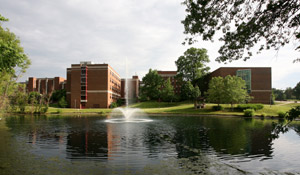Document Type
Article
Abstract
Understanding female mate choice in nonresource-based mating systems, where females appear to express strong preferences despite receiving no direct benefits from mate choice, remain a challenge to behavioral ecology. Brown (Brown JL. 1997. A theory of mate choice based on heterozygosity. Behav Ecol. 8:60–65) proposed the “good-genes-as-heterozygosity” hypothesis, which sought to establish the genetic nature of male quality. Despite recent attention, few studies have examined how multiple components of genetic quality influence mate choice in a highly promiscuous mating system such as that of the lekking wire-tailed manakin (Pipra filicauda, Aves: Pipridae). Based on a 4-year study in the Amazon basin of Ecuador we ask whether female wire-tailed manakins use heterozygosity and/or dissimilarity (relatedness) as mate-choice criteria, and if heterozygosity influences the ontogeny of male social status. Our data show that females select more heterozygous males as their partners. Females do not, however, appear to select mates based on their genetic dissimilarity as mated pairs were more related than expected under random mating. Heterozygosity of territorial males was correlated with 2 male morphological traits (wing and tarsus length), which suggests that females may assess male genetic quality via phenotypic correlates. In addition, our data show that heterozygosity was related to male social rise (territory acquisition) and suggests that heterozygosity may act as a filter of male reproductive potential. Lastly, we find no support for indirect benefits (i.e., increased offspring genetic quality) obtained via female choice for heterozygous males.
Publication Date
March 2010
Publication Title
Behavioral Ecology
Volume
21
Issue
2
First Page
203
Last Page
210
DOI
10.1093/beheco/arp176
Recommended Citation
Ryder, T.B.; Tori, W.P.; Blake, J.G.; Loiselle, B.A.; and Parker, P.G., "Mate choice for genetic quality: a test of the heterozygosity and compatibility hypotheses in a lek-breeding bird" (2010). Biology Department Faculty Works. 93.
DOI: https://doi.org/10.1093/beheco/arp176
Available at:
https://irl.umsl.edu/biology-faculty/93


